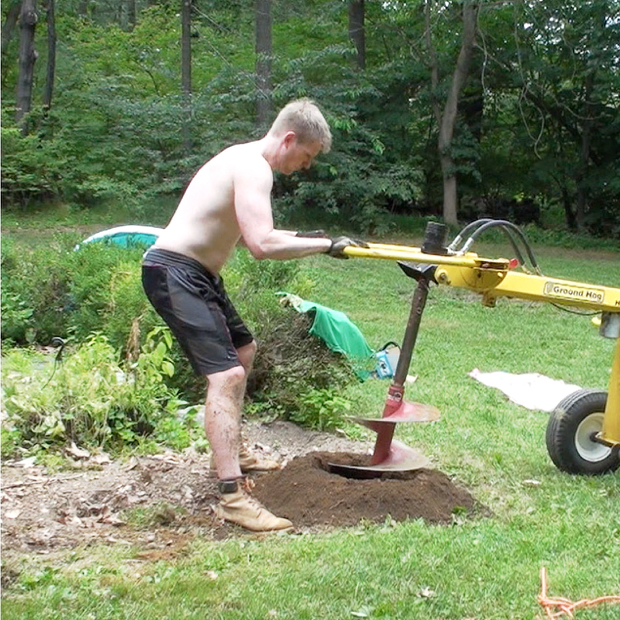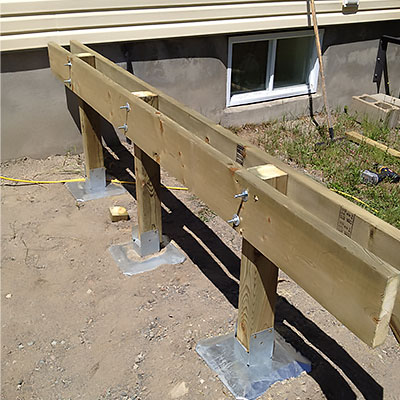Protect Structures, Long Lasting Impacts: Grasping the Art of Deck Footings Installation
Protect Structures, Long Lasting Impacts: Grasping the Art of Deck Footings Installation
Blog Article
Choosing the Right Deck Footings for Stability and Longevity
When it involves constructing a deck, one of one of the most important choices you will make is selecting the ideal grounds for security and longevity. The durability and security of your deck depend heavily on the sort of grounds you choose, as they supply the important assistance and security to hold up against the test of time. With a myriad of options readily available, it can be frustrating to identify which grounds are best fit for your specific requirements. In this conversation, we will certainly discover the different kinds of deck footings, think about the important variables to evaluate when making a decision, and look into the benefits and drawbacks of different choices. By the end, you will have a clearer understanding of the choices at hand and be far better geared up to make an educated decision for your deck task.
Kinds Of Deck Grounds
These footings are composed of a cylindrical opening loaded with concrete, which offers a solid foundation for the deck messages. Concrete pier footings are relatively easy to install and provide excellent security, making them a popular option for lots of deck tasks.
An additional sort of footing is the helical stack ground. Helical piles are steel shafts with helical plates connected to them. These grounds are installed by screwing them right into the ground, which develops a secure structure for the deck. Helical pile footings are excellent for areas with difficult soil problems, as they can be installed in nearly any kind of sort of dirt. They additionally enable simple modification and progressing of the deck if required.
Alternatively, some builders choose for precast concrete footings. These grounds are made of resilient concrete and can be found in various shapes and sizes to suit various deck layouts. Precast concrete grounds are hassle-free to install and offer a stable base for the deck structure.
Lastly, an additional choice is the post-in-anchor footing system. This sort of footing entails driving a steel support into the ground and attaching it to the deck article. It offers flexibility in terms of placing the deck blog posts and is ideal for decks with lightweight frameworks.
When choosing the best kind of deck footing, it is vital to take into consideration variables such as soil conditions, deck lots, and local building codes (Deck Footings). Consulting with an expert service provider or structural engineer can help guarantee the proper footing is picked for a secure and secure deck
Elements to Think About When Selecting Footings
When picking the suitable footings for a deck, it is essential to carefully think about different aspects such as dirt problems, deck lots, and adherence to local building codes. These elements play a substantial duty in making certain the stability and toughness of the deck framework.
The kind of soil on which the deck will be constructed figures out the kind of footings required. On the various other hand, decks constructed on clay or extensive soils might call for grounds that can fit the soil's propensity to increase and agreement.
One more essential factor is the deck lots. The weight of the deck, consisting of the materials used and any kind of prospective online loads such as furnishings or events, have to be taken right into account when choosing footings. The grounds should be designed his response to bear the weight of the deck and distribute it equally to avoid any architectural issues or failings.
Finally, adherence to local building regulations is vital. Building ordinance differ from area to area, and it is vital to conform with the details requirements established by the local authorities. Deck Footings. These codes ensure that the deck is developed securely and satisfies the essential criteria for structural honesty and load-bearing capability
Concrete Grounds: Advantages And Disadvantages

Concrete footings use numerous benefits and negative aspects when made use of as the structure for a deck. On the positive side, concrete grounds give excellent stability and resilience.
Another advantage of concrete grounds is their versatility. They can be put right into various sizes and shapes to accommodate different deck layouts and configurations. Concrete footings can be personalized to fit the certain demands and demands of the deck structure.
However, there are also some downsides to making use of concrete footings. One significant drawback is the cost and labor involved in their installment. Concrete footings call for excavation and typically need the assistance of hefty machinery. This can increase the overall price of the deck job and may need professional aid.

Helical Piers Vs. Sonotubes: Which Is Much better?
In taking into consideration the structure alternatives for a deck, the contrast between helical piers and sonotubes is crucial in establishing the remarkable option. Helical piers, also referred to as screw stacks, are steel shafts with helical plates affixed to them. They are turned right into the ground utilizing hydraulic machinery, offering a sturdy and stable foundation for the deck. On the various other hand, sonotubes are round types constructed from cardboard or fiber product that are loaded with concrete. They are put in an opening went into the ground and provide assistance for the deck.
When it comes to stability and resilience, helical piers find here have the upper hand. The helical plates on the piers develop a strong grip with the dirt, changing or avoiding any activity of the deck. This is specifically helpful in areas with unstable or changing soil conditions. Sonotubes, on the various other hand, rely only on the concrete filling up for stability, which might not provide the same level of stamina and resistance.
In terms of installment, helical piers are relatively much easier and faster to install useful content compared to sonotubes. The hydraulic equipment made use of to twist the piers right into the ground ensures a efficient and fast process. Sonotubes, on the other hand, call for excavating holes and pouring concrete, which can be taxing and labor-intensive.
In addition, helical piers are a more flexible choice. If needed, they can be used in different dirt conditions and can be changed or strengthened. Sonotubes, on the various other hand, might call for additional support, such as rebar, in specific dirt problems or locations with high lots requirements.
Selecting the Right Footings for Your Deck's Dimensions
For optimal structural stability, it is necessary to thoroughly choose the proper footings that straighten with the measurements of your deck. The measurements of your deck, including its size, size, and height, play a significant role in establishing the kind and dimension of footings needed.
When selecting footings for your deck, it is crucial to think about the load-bearing capability of the soil. The weight of the deck, combined with the weight of any furniture or people on it, exerts a considerable pressure on the grounds (Deck Footings). For that reason, it is vital to select footings that can appropriately support this weight without sinking or shifting over time.
Larger decks with better measurements require bigger grounds to supply adequate stability and assistance. The shape of the footings, whether they are rounded or square, depends on the design and format of the deck.
Conclusion
In verdict, picking the right deck footings is vital for ensuring security and resilience. Aspects such as the kind of grounds, the deck's measurements, and the pros and disadvantages of various options must be taken into consideration.
These footings consist of a cylindrical hole filled with concrete, which supplies a solid foundation for the deck articles. Concrete pier grounds are fairly very easy to mount and supply superb stability, making them a popular choice for numerous deck jobs.
Precast concrete footings are convenient to install and offer a steady base for the deck framework.
It uses versatility in terms of positioning the deck messages and is suitable for decks with light-weight structures.
Concrete footings supply numerous benefits and downsides when utilized as the structure for a deck.
Report this page